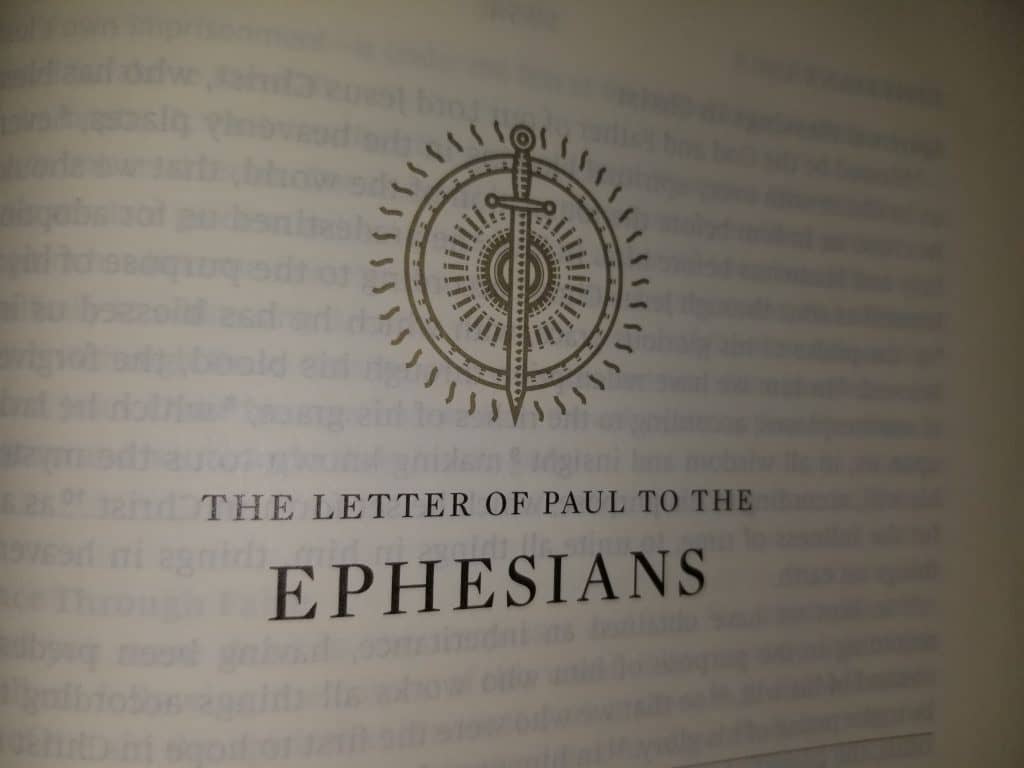⏱️ Estimated Reading Time: 3 min read
As with all words of Scripture, this letter from Paul is recorded that we might encounter our God and understand His good purposes. Paul writes this letter so that those who read it “will be able to understand (Paul’s) insight into the mystery of Christ.” In writing to the Ephesians, Paul assumes that these readers will no doubt have heard the dramatic story of how Christ was revealed to Paul (Ephesians 3:2).
Paul’s first encounter with Christ was not through the words of Scripture but through direct revelation. Paul was on his way to persecute those who believed in Jesus but he was stopped in his tracks by a bright, undeniable light. Even when Jesus lived on the earth, he was almost never so visibly and unavoidably seen. In fact, many times when he taught he spoke in parables so that those who heard him “may indeed see but not perceive” (Mark 4:12). He rarely appeared in a form so undeniable as when he appeared to Paul (and then Paul walked away blind for a time, unable to see anything else!)
A revelation is a surprising and unknown fact made known in a dramatic way. Christ revealed himself to Paul in a dramatic way, which gave Paul instant insight into God’s previously unknown plan of salvation. Now Paul is making clear to the Ephesians that God’s plan of salvation expands beyond the Israelites to include all people. This was the mystery that was previously unknown.
Ultimately, in Ephesians 3:4 Paul is underlining his authority as an apostle which lends weight to the words he writes to the Ephesians. God revealed himself directly to Paul and has made him one of the “stewards of the mysteries of God” (1 Corinthians 4:1). These mysteries have not been revealed directly to us who read his words, but we can read Paul’s letters to his beloved congregations and glean from them his “insight into the mystery of Christ” (Ephesians 3:4). Now anyone who reads the words of the Bible has the same insight!
Paul also demonstrates his confidence in the perspicuity of Scripture. Through his letters, Paul seeks to clarify and explain the purposes of God and His plan of salvation. The mystery of Christ is both celebrated and clarified through Paul’s words. Though Paul’s letters can be complex, everything we need to know to be saved can be learned from Scripture. The Westminster Confession of Faith describes perspicuity, saying: “All things in Scripture are not alike plain in themselves, nor alike clear unto all. Yet, those things that are necessary to be known, believed, and observed for salvation are so clearly propounded, and opened in some place of Scripture or another, that not only the learned, but the unlearned, in a due use of the ordinary means, may attain unto a sufficient understanding of them.”
This definition reminds us that between the various authors of the Bible, we can learn everything we need to know to be saved. Not only do we have the words of Paul, but we have the words of the gospels, which were “written so that you may believe that Jesus is the Christ, the Son of God, and that by believing you may have life in His name” (John 20:31). And we also have the testimony of Peter and others who were “eyewitnesses of his majesty” (2 Peter 1:16). We can also read the words of the prophets and see their fulfillment in Christ. Paul has gained insight into the mystery of Christ and he is passing his confident conclusions on to us.



